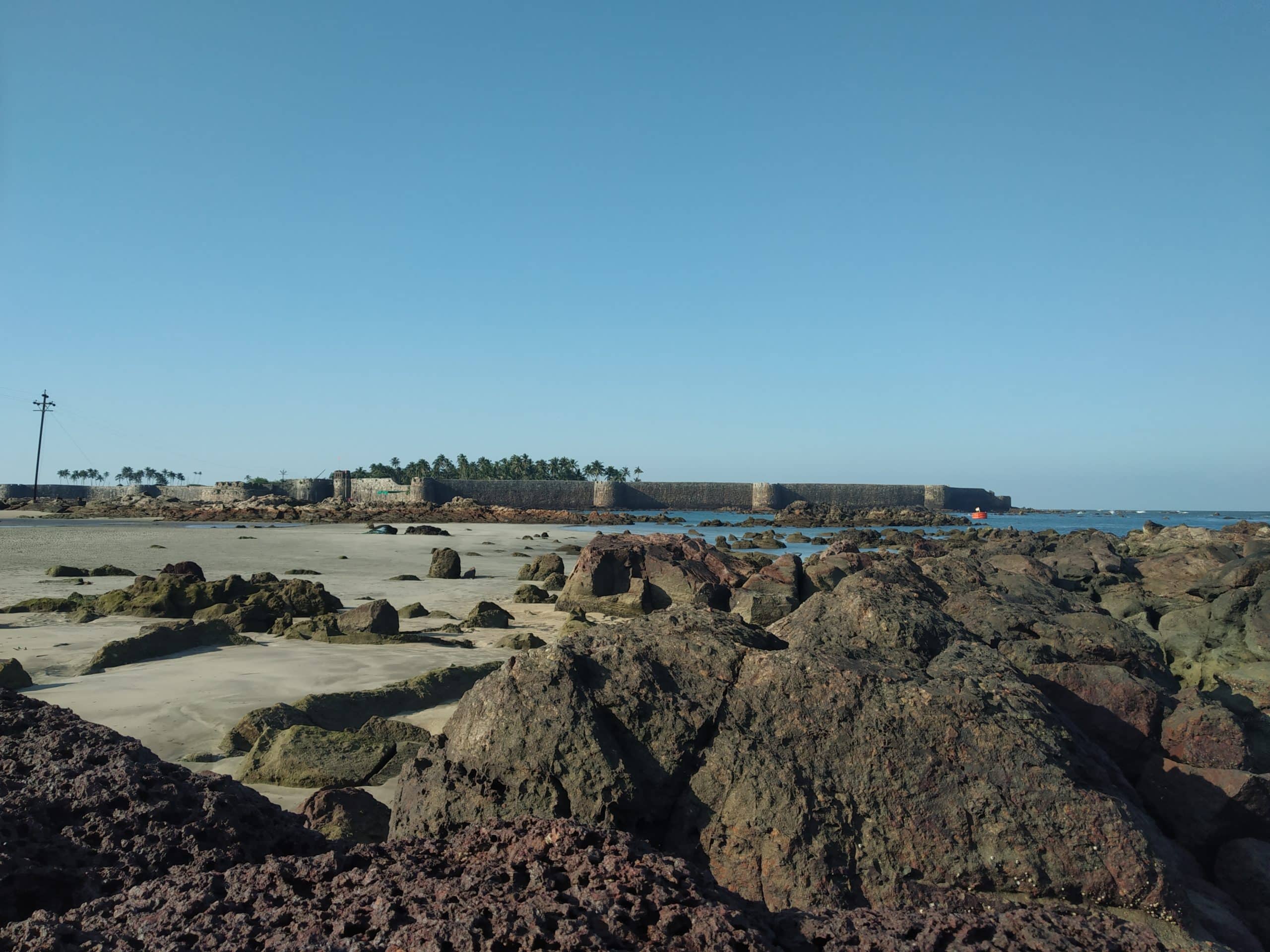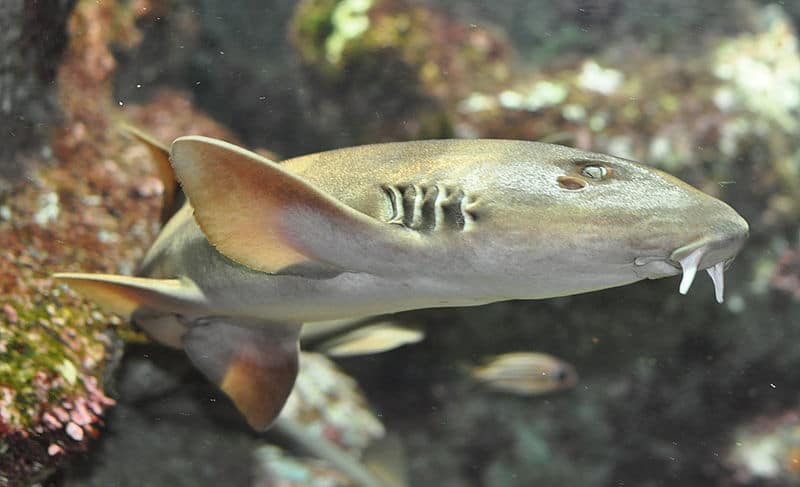The field of marine biology has been relatively new to me, other than a voluntary stint at an organisation that caters to sea turtle conservation. Fascinated by it, as I am, when given the opportunity to study elasmobranchs (sharks and rays) I readily took it up. Drawn by their elusive nature, I was excited to experience their world and other wonders of marine life. Hence, for my Master’s research, I took up to study sharks and rays in Malvan and Chennai in India at Dakshin Foundation.
Marine biology is a vast field and by working on elasmobranchs I had just begun to scratch the surface. The challenges of studying marine organisms are apparent from the existing knowledge gaps as they are known to occupy vast open waters and thus can be difficult to study in their natural habitats.

Malvan coast lined by the Sindhudurg fort in Maharashtra. Photo: Shruthi Kottillil
My two study sites, being close to the Arabian Sea and Bay of Bengal which are on the west and east coast of India respectively, were sadly affected by the nationwide lockdown implemented due to the COVID pandemic. Although it was not the most ideal of situations, I was still able to sample sharks and rays from fishing vessels that landed their catch onshore for a few weeks. This reminded me of the time when I was studying bats in a remote location in Southern India. The Nipah virus outbreak then hadn’t affected my field-work as much and I could continue my study (with precaution) on temple-roosting bats, walking amongst their guano and food scraps.

Chennai harbour with docked fishing boats during sunrise in Tamil Nadu. Photo: Shruthi Kottillil
The focus of my study, partly, was on the Arabian and the Grey bamboo shark (Chiloscyllium arabicum and Chiloscyllium griseum respectively) which at first glance would not really fit into the description or perception of a ‘shark’. They are small creatures with their mouths located on the ventral side (underside) and a head resembling that of a catfish. They are nonetheless powerful and beautiful animals with strength and tolerance unmatched with that of other sharks. This was because they were the only sharks (during my study) that stayed alive, after spending hours entrapped and entangled in trawl and gill nets as they were brought on-shore.

Arabian and Grey bamboo sharks that both belong to Near Threatened IUCN category. Photo: Shruthi Kottillil
Most animals trapped in these convoluted nets would die but not these sharks. They would be alive with few even in display of their strength, biting down so hard on neighbouring sharks that separating them was a task unto itself. Others would display stiff bodies almost at the verge of death but even then, showing considerable resilience, with their ever-functioning spiracles (present in benthic dwellers) trying to take in as much air as possible. Often, rescuing individuals trapped in nets was a source of great pleasure.
These nets and fishing techniques are known to be damaging to all forms of marine life. However, the practice of fishing as a source of livelihood for millions should not be forgotten amongst the cries to save them. A balance has to be struck which ensures, if not a win-win situation, at least one that does not negatively impact either one of the interacting parties.
The best part was the release of sharks to study their survival. The release of rescued sharks was needed to observe their physical responses in water which would then be used to calculate their survival rates. The sense of satisfaction was immense, especially knowing that they would be getting another chance at survival. Since these species are not well studied more research needs to be carried out to better understand their biological and ecological characteristics.

Release of Arabian bamboo shark (Chiloscyllium arabicum), Photo: Shruthi Kottillil
The study of both species was restricted to the west coast with no observation in the east coast of India, much to my disappointment as I was looking to study the differences in survival rates among subpopulations if any. This was possibly due to sampling bias as boats in Chennai fished in relatively open waters with gill, trawl nets and hook and line methods, while my data came exclusively from trawl nets due to on-field difficulties. Trawlers drag nets over sea bottom and open waters entrapping animals; gill nets cast mesh screens in water resulting in entanglement while hooks and lines use baited hooks to capture them.
However, the disappointment of not finding any bamboo sharks in Chennai to compare results did not last long. Bamboo sharks themselves were an inspiration on adapting and working best in unprecedented situations. Their continued determination to survive even in adverse conditions can be taken as a source of motivation for the humankind in today’s tiring situations.
Sharks and rays offer several benefits, many of which we are only beginning to realise as a consequence of their declining numbers. There are a lot of success stories in shark conservation around the world and even in India; one being the whale shark campaign in Gujarat which has gone a long way in conserving these species. I hope my study can provide a foundational understanding of the impact of fisheries on elasmobranch survival. Hopefully, contributing to a better understanding of these animals and how they are able to survive the capture and handling process and help develop conservation efforts centred around making fishing practices more targeted.


